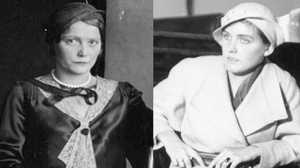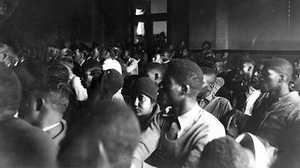The Scottsboro Defense Committee
The Scottsboro Defense Committee was formed on December 19, 1935 with representatives of the NAACP, the International Labor Defense, the American Civil Liberties Union (A.C.L.U.), the League for Industrial Democracy, and the Methodist Federation for Social Service. The organization's main objective was to provide a united defense for the Scottsboro defendants.
This was to be accomplished by adhering to a few key principles. Samuel Leibowitz was to be retained as chief counsel, but a Southern lawyer would handle most of the work in the courtroom. Each of the founding organizations would have one representative in the S.D.C., and all organizational members would support the decisions of the S.D.C. In other words, the I.L.D. could not independently continue to organize mass protests, or make blunders like the bribery attempt of Victoria Price.
Another organization, the American Scottsboro Committee (A.S.C.) had been invited to join but did not commit to the S.D.C. The A.S.C. was a group of prominent New Yorkers including church men, newspaper editors and entertainers (Bill "Bojangles" Robinson who later became Roy Wright's patron) who supported Leibowitz and balanced out the influence of the I.L.D. Once Leibowitz signed with the S.D.C., though, the A.S.C. soon lost its purpose and donated its files to the new organization. The S.D.C. chose as its chairman Dr. Allan Knight Chalmers, the pastor of New York's Broadway Tabernacle Congregational Church, a pacifist and civil rights activist. Chalmers' first objective was to win support of moderate and liberal Southerners, but he was rebuffed by those still suspicious of the I.L.D. connection.
In 1936, Alabama Attorney General A. A. Carmichael and prosecutor Thomas Knight came to Leibowitz with a proposed compromise. It would require that Patterson's case not be appealed, three of the defendants plead guilty to some sort of assault on the girls, and Powell be tried for assault on a deputy. The S.D.C. did not want the defendants to admit to any guilt, but Leibowitz pointed out that the alternative might be sentences of life or death. Finally they agreed, one stating: "I say yes to the proposal, but with a very heavy heart, and I feel very badly about it." In the end, that compromise did not come about, but after four of the defendants were convicted of rape, four others were released in 1937.
In the years that followed, the S.D.C. and its member organizations worked to place the freed boys in jobs, and to continue to raise the money required to continue to petition Alabama for the parole and pardon of the imprisoned defendants. Almost all of these efforts were frustrated. The defendants who had been freed led troubled, vagabond lives, and the prisoners were denied parole despite the favorable parole hearings that the governor had promised.







